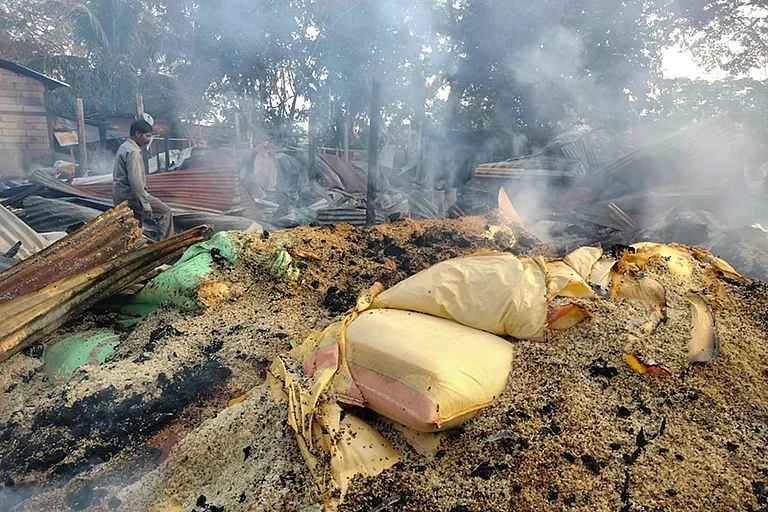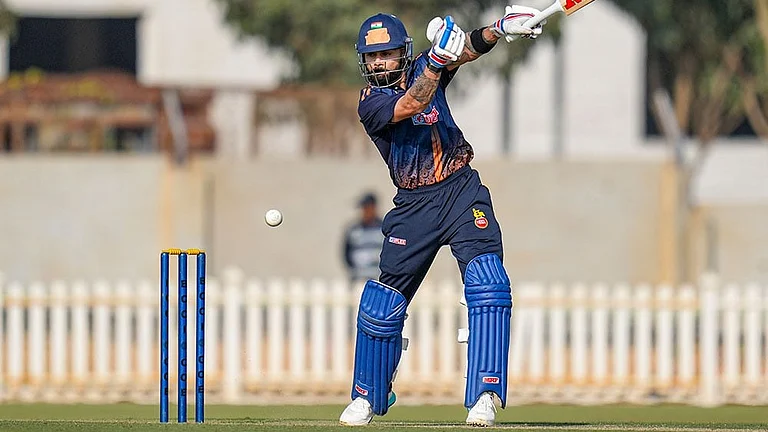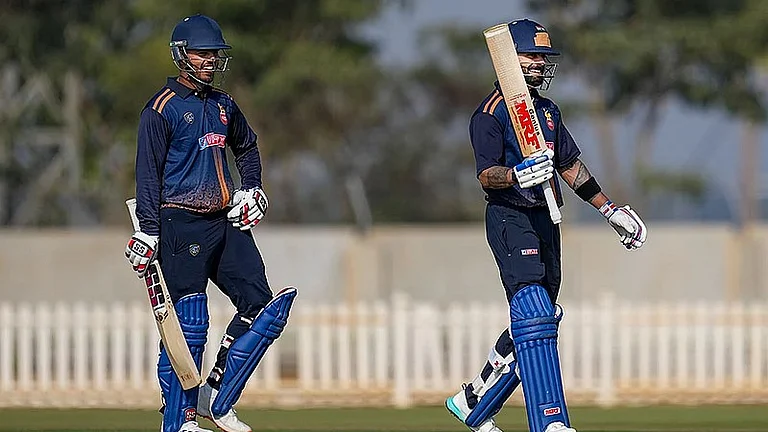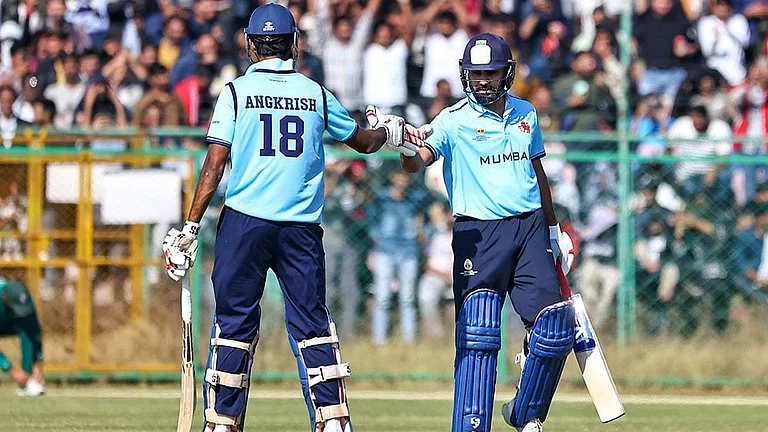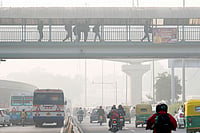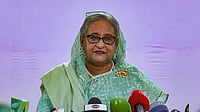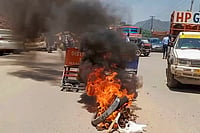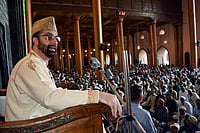
| Illustration by Sorit |
The 20 best years of my life were spent in Gujarat. I have been a mill employee, a lecturer and a reporter in Ahmedabad, living in Gujarati localities, learning to speak the language fluently, and finally marrying a Gujarati, who takes pride in reminding me she’s a Bombay-born Gujarati. As a callow youth seeking a future in the 1960-70s, I found people at all levels going out of their way to help me—or anyone who needed help, for that matter. There was no discrimination of any kind. As a reporter, I covered vast areas of the state. My impression of the state is that of a peace-loving, helpful people. That is why I am distressed at the hatred, religious animosity and intolerance that was on display in 2002 in my beloved Gujarat. Even so, the state has many plus points. It has had no senas; the Sardar Sena, which demanded special rights for Gujaratis, made no impact.
The thread, net and blankets department at Calico Mills, Ahmedabad, one of the best, professionally managed units in the country, was started by a highly qualified and experienced Kerala Brahmin, K.R. Vishwanath. He gathered workers and technicians for this department from thread and net units in the south. Soon, it was packed with Dharmarajans, Subramanians, Bhaskarans, Krishnaswamys—almost 95 per cent of the employees were Keralites. The department made huge profits and no one complained against the “Madrasi” department; instead, Gujarati traders lined up to bag dealerships for its products. Feelings of tolerance and cooperation were disturbed only during the decline of the textile mills, which began around the mid-1980s. This was as much a result of mismanagement as of competition from powerloom units in the south, which had equipped themselves with modern, automated machines.
Gujarat has had the advantage of vast resources and also men and women of vision to match. No wonder it was the first to set up, mainly on the initiative of wealthy mill-owning families, institutions like the IIM, the Physical Research Laboratory, space research centres and the Ahmedabad Textile Industries Research Association. Since the state was not known for academic brilliance, local students found it hard to enter these institutions. This appeared strange to me because, in the past, Gujarat produced some of the best doctors, surgeons and chartered accountants in India, but Gujarat University hasn’t made much of an impact. However, Gujaratis never agitated for preferential treatment of locals and the academic environment was not disturbed.
Like in so many other states, education was affected by politics. Stalwarts from the undivided Congress argued that English, being a foreign language, should be taught only from Std VIII on. Morarji Desai, Thakorebhai Desai, Maganbhai Desai and some stalwarts of Gujarat Vidyapeeth led this lobby. One result of such an outlook was that Gujarat University lost out on the services of the brilliant Dr Vikram Sarabhai, who lost the election for the vice-chancellor’s post. He was beaten by Maganbhai Desai, whose only qualification was his anti-English stance. The lack of a foundation in English affected higher studies in Gujarat. College students would write Keat for Keats. The politicians who adopted such a backward stance would send their children to the best English-medium schools. For the rest, learning English was supposed to be unpatriotic. Gujarat was left behind in the race for higher education.
Gujarati adoration for local leaders, especially those associated with the freedom movement, is ardent. Generations of Gujaratis were taught to believe that Jawaharlal Nehru was nothing compared to Sardar Patel, who should have been India’s first prime minister. Nehru’s international flavour and his citizen-of-the-world vibes were held against him. He was accused of being open to foreign influence; his friendship with Lady Mountbatten was looked upon with suspicion. Narendra Modi played on these Gujarati notions during the 2014 election campaign, making comparisons in which Nehru is disparaged and the Sardar held up as superior.
The Gujarati discourse over the ages also distorts history to project Muslims as evil plunderers and destroyers of temples. Indeed, the state has faced the attacks of Muslim raiders, but those stories are resurrected to evoke resentment towards Indian Muslims of these times. This has nurtured a volatile atmosphere, in which riots are waiting to happen. Among the worst riots was the one of 1969 in Ahmedabad. In the 1960-70s, the Jan Sangh, and in later decades, the BJP created pockets of communal tension in areas like Khadia and Raipur in Ahmedabad. Godhra and the post-Godhra riots of 2002 created such a polarisation that it has proved advantageous to Modi in his long stint as Gujarat chief minister and ultimately fuelled his prime ministerial campaign.
Gujarat will be a richer state if the prosperity evident in certain sections spreads to cover the entire population. Living there for 20 years, speaking the local language and marrying a local girl contributed to my understanding of this great state. I was at first puzzled by the chandlo tradition, in which guests attending a wedding reception make a cash gift, an amount used to offset a part of the wedding expenses. People who contribute do so in the certainty that, when there’s a wedding in their family, they too can expect such windfalls. Another Gujarati custom that surprised me was of two or three people sharing a cup of tea. For business people who have to do this frequently through the day, the advantage is that they can not only order fewer cups for guests, they can also avoid acidity since they have no more than a sip of tea each time guests drop by.
Gujaratis are widely travelled but their minds strangely remained closed to anything but conservative and traditional ideas. Gujarati NRIs who have lived for years in the US still believe that Muslims are the worst enemies of India. Will they ever change? The Gujaratis, both within and away from India, could contribute much more besides money to Modi’s development dreams. But that development has to be free from prejudices of all sorts and cover every section of our population.
(The writer has worked in Gujarat as a textile mill worker, college lecturer and a newspaper reporter.)







